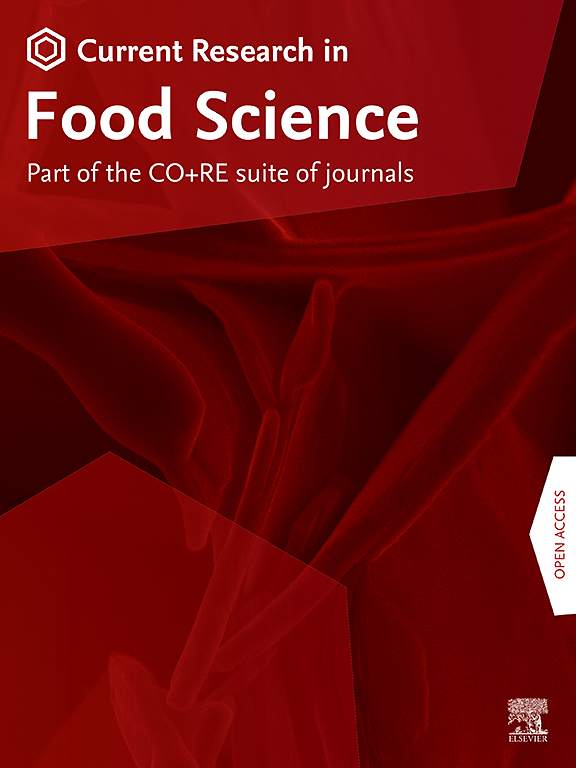Plant tissue-based scaffolds filled with oil function as adipose tissue mimetics
IF 7
2区 农林科学
Q1 FOOD SCIENCE & TECHNOLOGY
引用次数: 0
Abstract
Cellulosic scaffolds filled with oil were designed to replicate animal adipose tissues. Many plants are structured as polysaccharide-based cellular solids. They maintain their integrity after drying, can serve as a scaffold for incorporating fat, and do not lose integrity upon heating, thus resembling native adipose tissue. Carrots, broccoli, and asparagus were freeze-dried and subsequently filled with peanut oil, its glycerolysis product (GP), and the oleogel of this GP. Oleogel-filled scaffolds displayed high oil binding capacity (≥95%), and an oil loss resembling that of adipose tissue. In addition, the texture of oleogel-filled asparagus and broccoli tissue closely resembled that of beef and pork adipose tissues, respectively. Plant scaffolds closely emulated the temperature-dependent rheological behavior of adipose tissue. These new materials could significantly improve the quality of plant-based meat analogues, such as burgers and sausages, by preventing the thermal softening of the material upon cooking and excessive oil loss.

以植物组织为基础的油填充支架具有模拟脂肪组织的功能
填充油的纤维素支架被设计用来复制动物脂肪组织。许多植物的结构是多糖类的细胞固体。它们在干燥后保持完整性,可以作为脂肪的支架,并且在加热时不会失去完整性,因此类似于天然脂肪组织。胡萝卜、花椰菜和芦笋被冷冻干燥,然后用花生油、其甘油水解产物(GP)和这种GP的油凝胶填充。油凝胶填充支架具有较高的油结合能力(≥95%),其油损失与脂肪组织相似。此外,油凝胶填充的芦笋和西兰花组织的质地与牛肉和猪肉的脂肪组织非常相似。植物支架紧密地模拟了脂肪组织的温度依赖性流变行为。这些新材料可以通过防止材料在烹饪时的热软化和过多的油损失,显著提高植物性肉类类似物(如汉堡和香肠)的质量。
本文章由计算机程序翻译,如有差异,请以英文原文为准。
求助全文
约1分钟内获得全文
求助全文
来源期刊

Current Research in Food Science
Agricultural and Biological Sciences-Food Science
CiteScore
7.40
自引率
3.20%
发文量
232
审稿时长
84 days
期刊介绍:
Current Research in Food Science is an international peer-reviewed journal dedicated to advancing the breadth of knowledge in the field of food science. It serves as a platform for publishing original research articles and short communications that encompass a wide array of topics, including food chemistry, physics, microbiology, nutrition, nutraceuticals, process and package engineering, materials science, food sustainability, and food security. By covering these diverse areas, the journal aims to provide a comprehensive source of the latest scientific findings and technological advancements that are shaping the future of the food industry. The journal's scope is designed to address the multidisciplinary nature of food science, reflecting its commitment to promoting innovation and ensuring the safety and quality of the food supply.
 求助内容:
求助内容: 应助结果提醒方式:
应助结果提醒方式:


